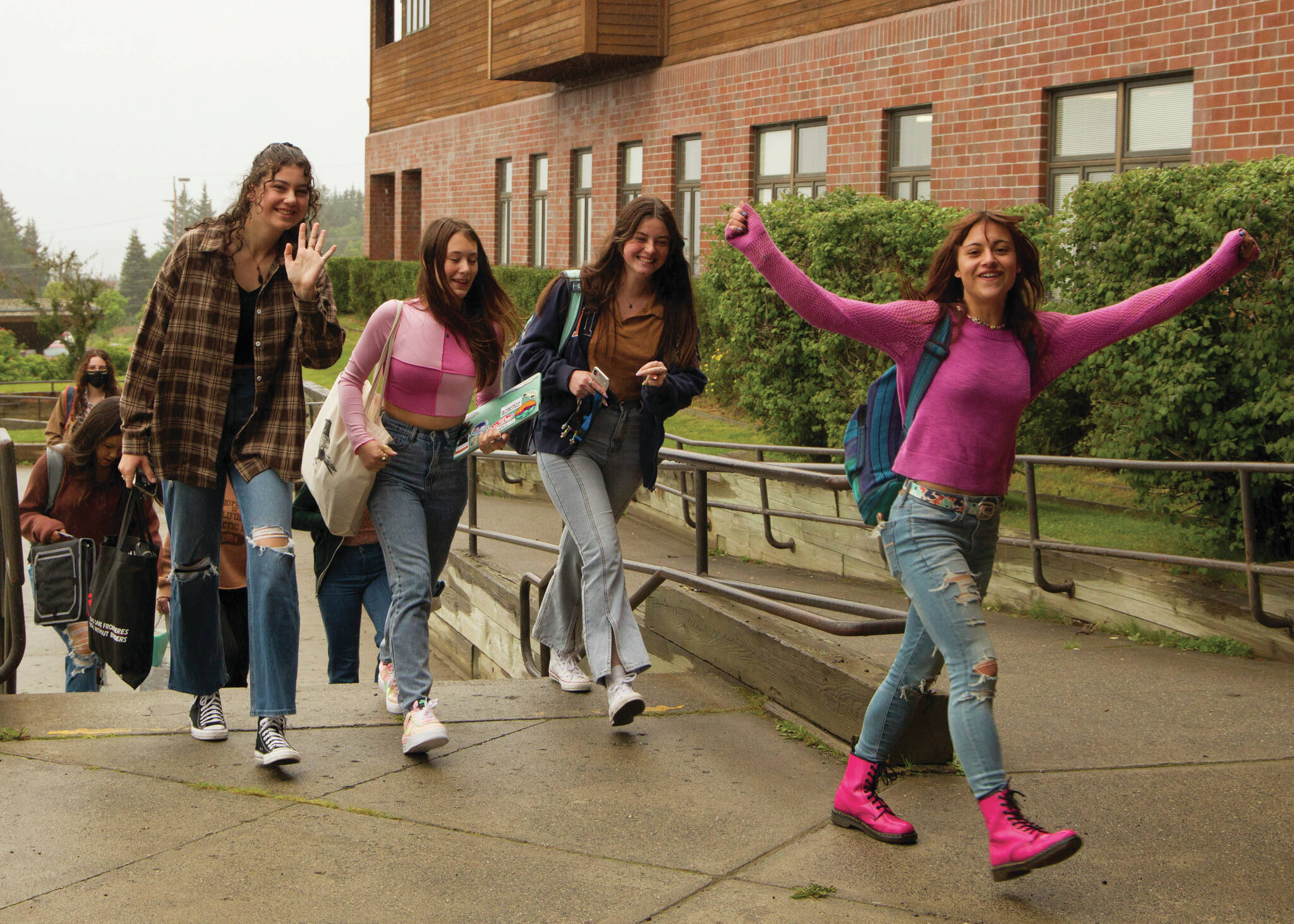Thirteen schools in the Kenai Peninsula Borough School District are operating with universal indoor masking for staff and students in response to high COVID-19 case numbers, according to data published by the district on Tuesday. Another two schools were operating remotely.
Those numbers came as more than 1,200 students have been identified as close contacts and more than 200 students have tested positive for COVID-19 since Aug. 23, when the district began formally tracking those numbers.
In the last week, 315 students were identified as close contacts and 72 students tested positive for COVID-19. That’s in addition to 13 staff who have been identified as close contacts and 10 staff who have tested positive in the last week.
Moose Pass School joined Nanwalek School in operating 100% remotely this week.
Nanwalek School was operating remotely due to a seven-day “hunker down” order issued by local community authorities, effective Aug. 25 until at least Sept. 14.
Schools operating with universal indoor masking for staff and students on Tuesday included Fireweed Academy, Homer Flex School, Homer High School, Homer Middle School, Kenai Middle School, Paul Banks Elementary School, Port Graham School, River City Academy, Seward Elementary School, Seward High School, Seward Middle School, Sterling Elementary School, Tebughna School and West Homer Elementary School.
Primary factors that impact whether or not universal indoor masking is implemented in a school include the number of COVID positive cases in the school, the number of close contacts who need to quarantine, school absenteeism rates, level of community transmission and local health care capacity, according to the school district.
KPBSD quarantine protocols
KPBSD is using the same COVID-19 quarantine guidance as the Alaska Department of Health and Social Services for the 2021-2022 school year, with those protocols largely based on whether or not the contact is vaccinated. However, the district observes an exception to those guidelines if an infected individual and their close contact were correctly using well-fitting masks and other mitigation measures were in place in the school. That exception only applies to schools where universal masking is observed.
In schools that do not follow universal masking for staff and students, a close contact is defined as anyone who is within 6 feet of someone who has COVID-19 for a cumulative total of 15 minutes over a 24-hour period. Once the district learns of a positive COVID case, close contacts are notified and a general communication is shared with the school community.
The quarantine protocol for close contacts depends on whether or not the person exposed is vaccinated, symptomatic or has tested positive for COVID in the last three months.
When close contacts are called by their school nurse, that contact is asked to verify, if applicable, that they are vaccinated or that they have had COVID in the last three months. KPBSD Nurse Melisa Miller asks for a vaccination status card or documentation of a positive COVID-19 test, and asks other school nurses to follow the same procedure.
Unvaccinated, asymptomatic close contacts of someone who is COVID-positive must immediately quarantine. They can return to school one to two weeks after exposure once cleared by public health.
Unvaccinated, symptomatic close contacts of someone who is COVID-positive must immediately isolate. If that person tests positive, they must keep isolating. If they test negative, they must stay home while symptomatic or until finished with seven- to 14-day quarantine, whichever is longer, then talk to a health care provider and consider testing again before returning to school.
Vaccinated, asymptomatic close contacts of someone who is COVID-positive do not need to quarantine. They must get tested within three to five days of exposure, must wear a mask for 14 days and should carefully monitor for symptoms over the next two weeks.
Vaccinated, symptomatic close contacts of someone who is COVID-positive must get tested and immediately isolate. If that person tests positive, they must keep isolating. If they test negative, they must stay home while symptomatic, then talk to a health care provider and consider testing again before returning to school.
Regardless of vaccination status, symptomatic individuals with no known contact should immediately get tested and stay home. A positive test means that person must isolate for 10 days. A negative test means that person should stay home while symptomatic, then talk to a health care provider and consider testing again before returning to school.
The CDC distinguishes between quarantine and isolation. Isolation separates sick people with a contagious disease from people who are not sick, while quarantine restricts people who were exposed to a contagious disease to see if they become sick.
KPBSD’s full COVID-19 mitigation plan, as well as community case numbers and quarantine protocols for vaccinated and unvaccinated students is available on the district’s COVID-19 website at covid19.kpbsd.org.
People can confidentially report a positive COVID-19 test for themselves or their child to their school nurse or to Nurse Miller by calling 907-260-2391 or by emailing MMiller@kpbsd.k12.ak.us.
Reach reporter Ashlyn O’Hara at ashlyn.ohara@peninsulaclarion.com.


